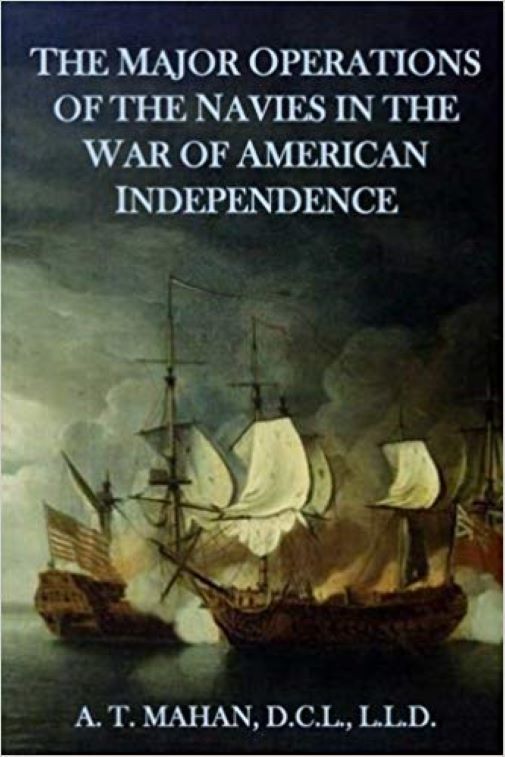Mahan derived this work from his larger work on naval warfare of the colonial period. From Chapter 1 he begins with the issue of sea power, 1775. At the time when hostilities began between Great Britain and her American Colonies, the fact was realized generally, being evident to reason and taught by experience, that control of the water, both ocean and inland, would have a preponderant effect upon the contest. It was clear to reason, for there was a long seaboard with numerous interior navigable watercourses, and at the same time scanty and indifferent communications by land. Critical portions of the territory involved were yet an unimproved wilderness. Experience, the rude but efficient schoolmaster of that large portion of mankind which gains knowledge only by hard knocks, had confirmed through the preceding French wars the inferences of the thoughtful. Therefore, conscious of the great superiority of the British Navy, which, however, had not then attained the unchallenged supremacy of a later day, the American leaders early sought the alliance of the Bourbon kingdoms, France and Spain, the hereditary enemies of Great Britain. There alone could be found the counterpoise to a power which, if unchecked, must ultimately prevail. Nearly three years elapsed before the Colonists accomplished this object, by giving a demonstration of their strength in the enforced surrender of Burgoyne’s army at Saratoga. This event has merited the epithet “decisive,” because, and only because, it decided the intervention of France. It may be affirmed, with little hesitation, that this victory of the colonists was directly the result of naval force . . . Note: Some older books were published containing a range of page sizes. This book had three. After test runs in several dimensions, St. John’s Press chose to reprint as a 6″x9″ to accommodate all page sizes and retain readability.
370 pages





